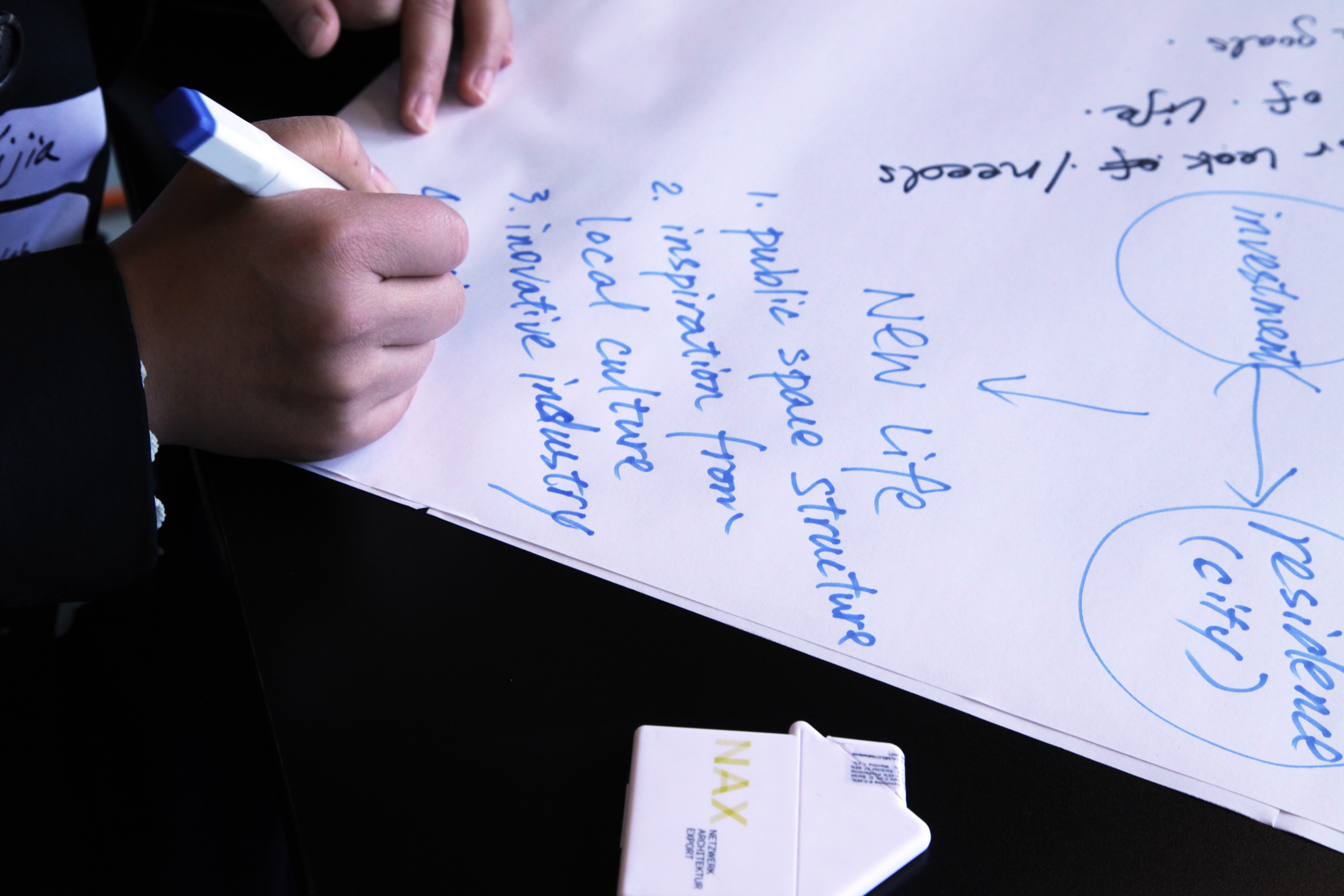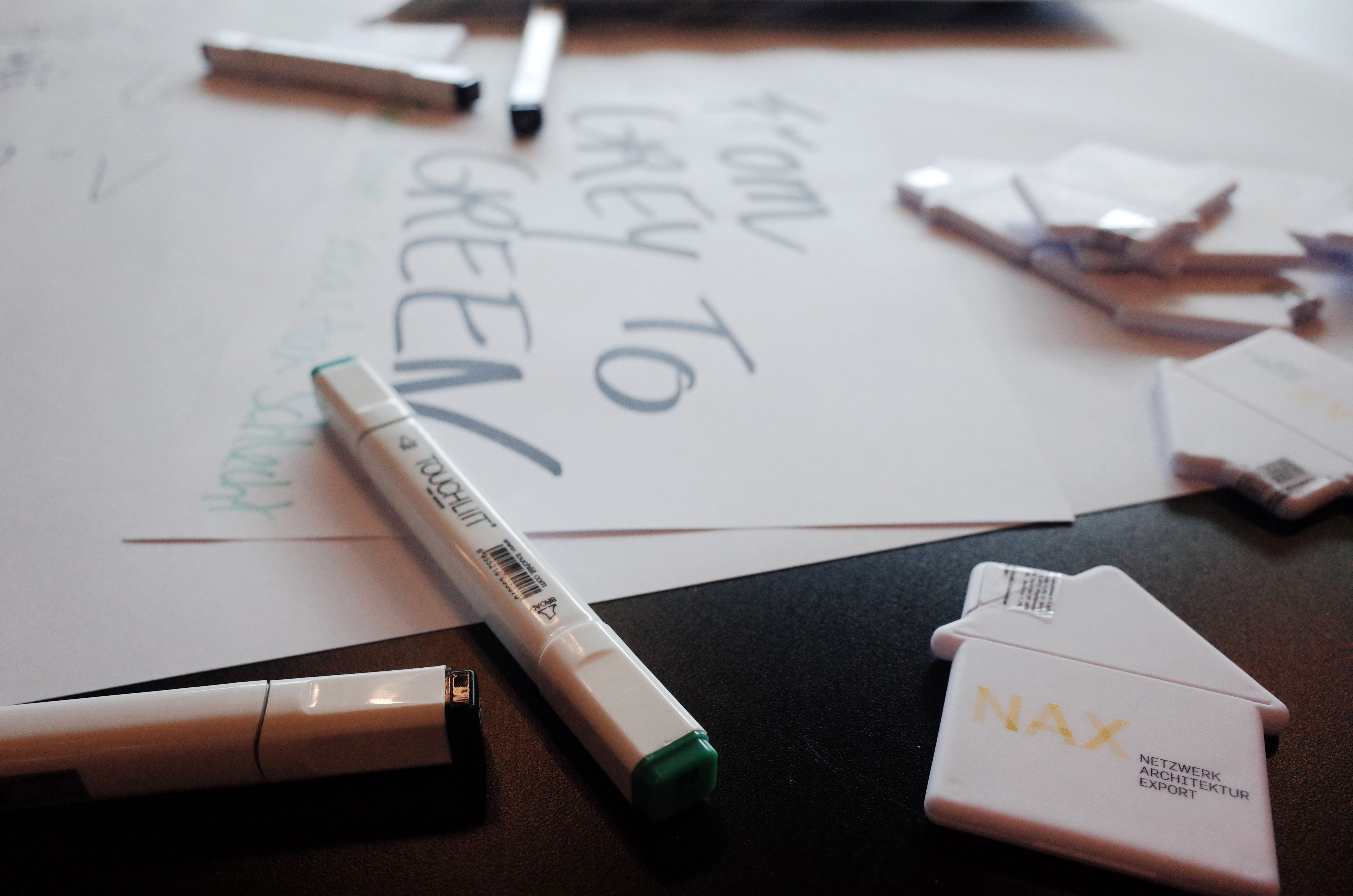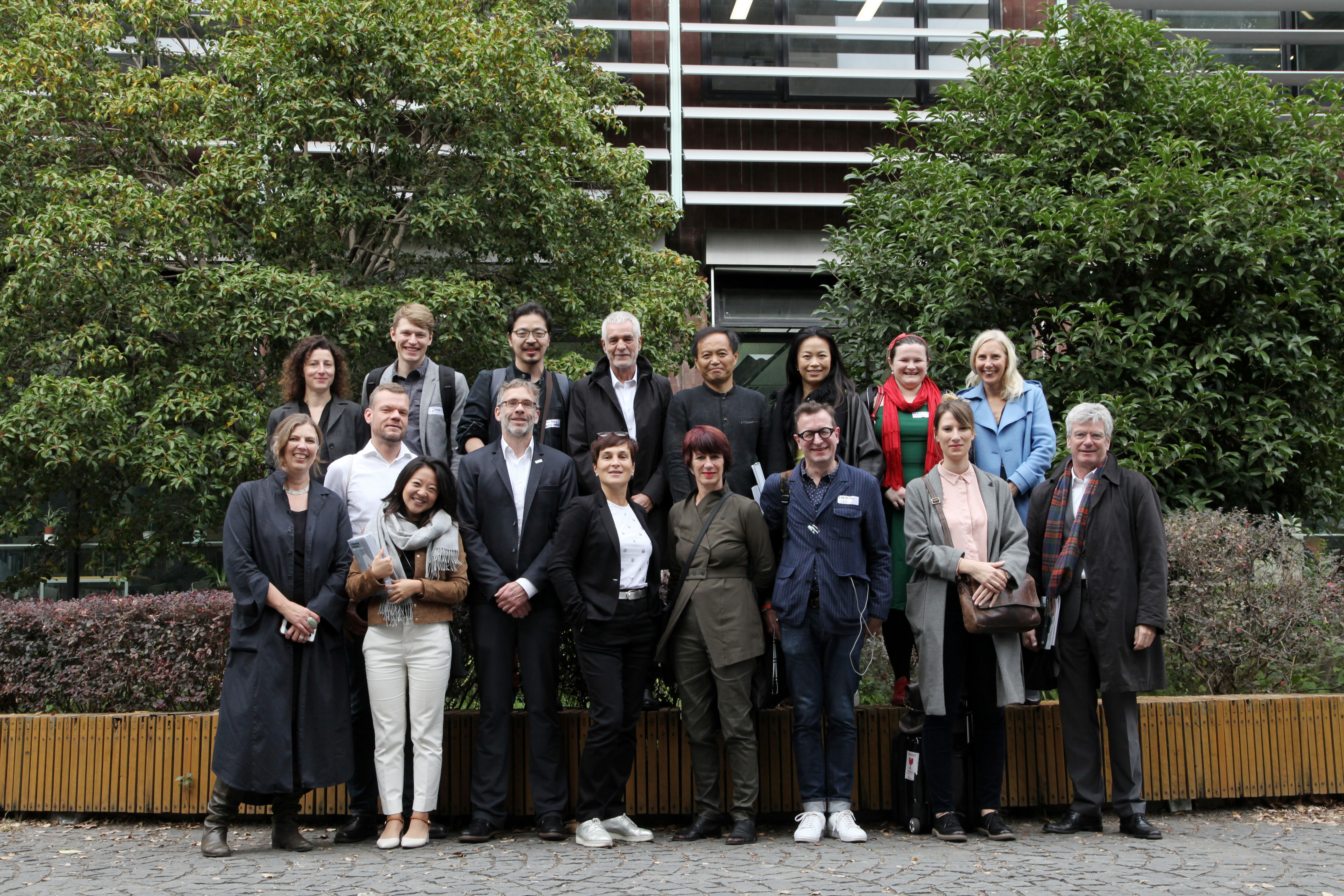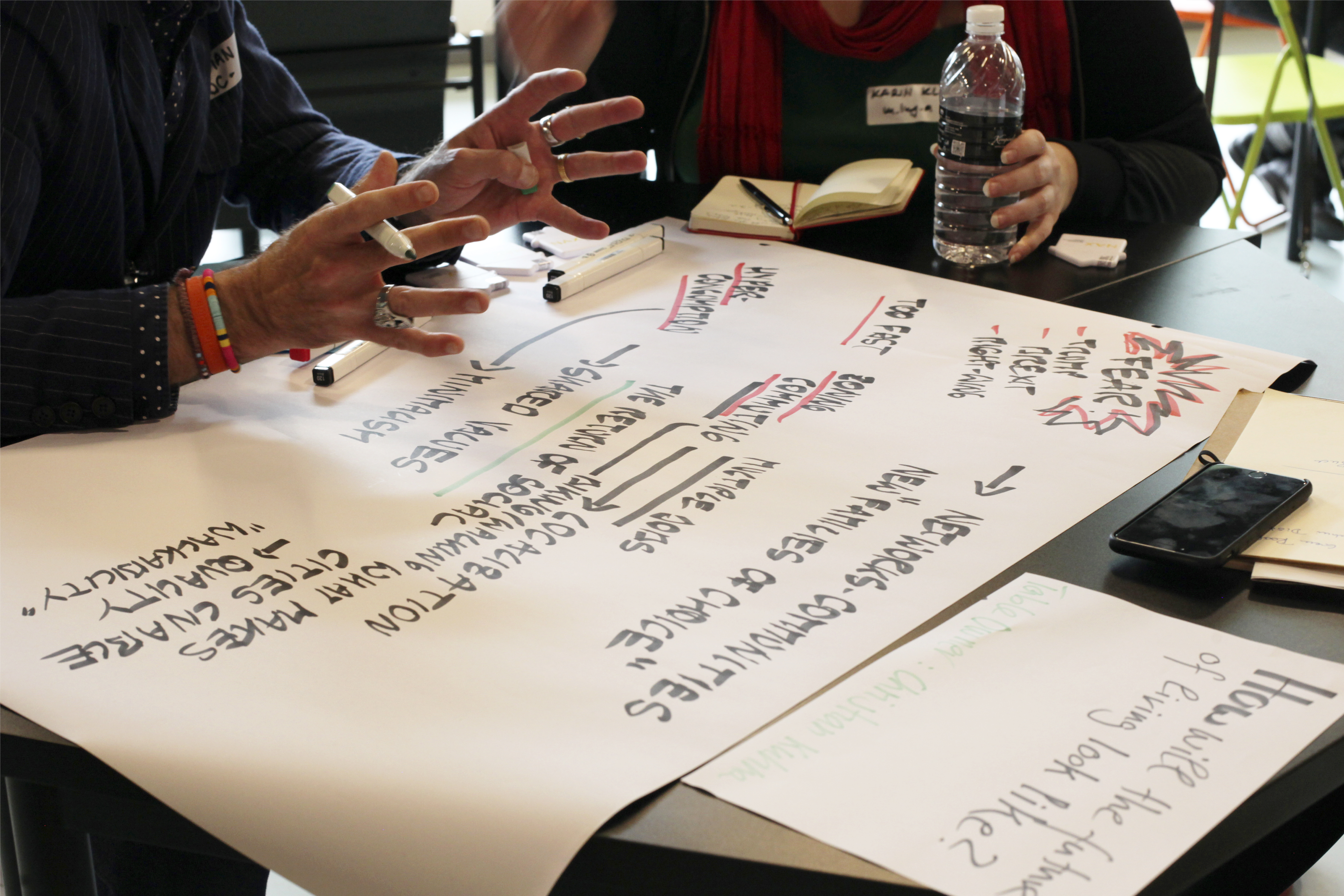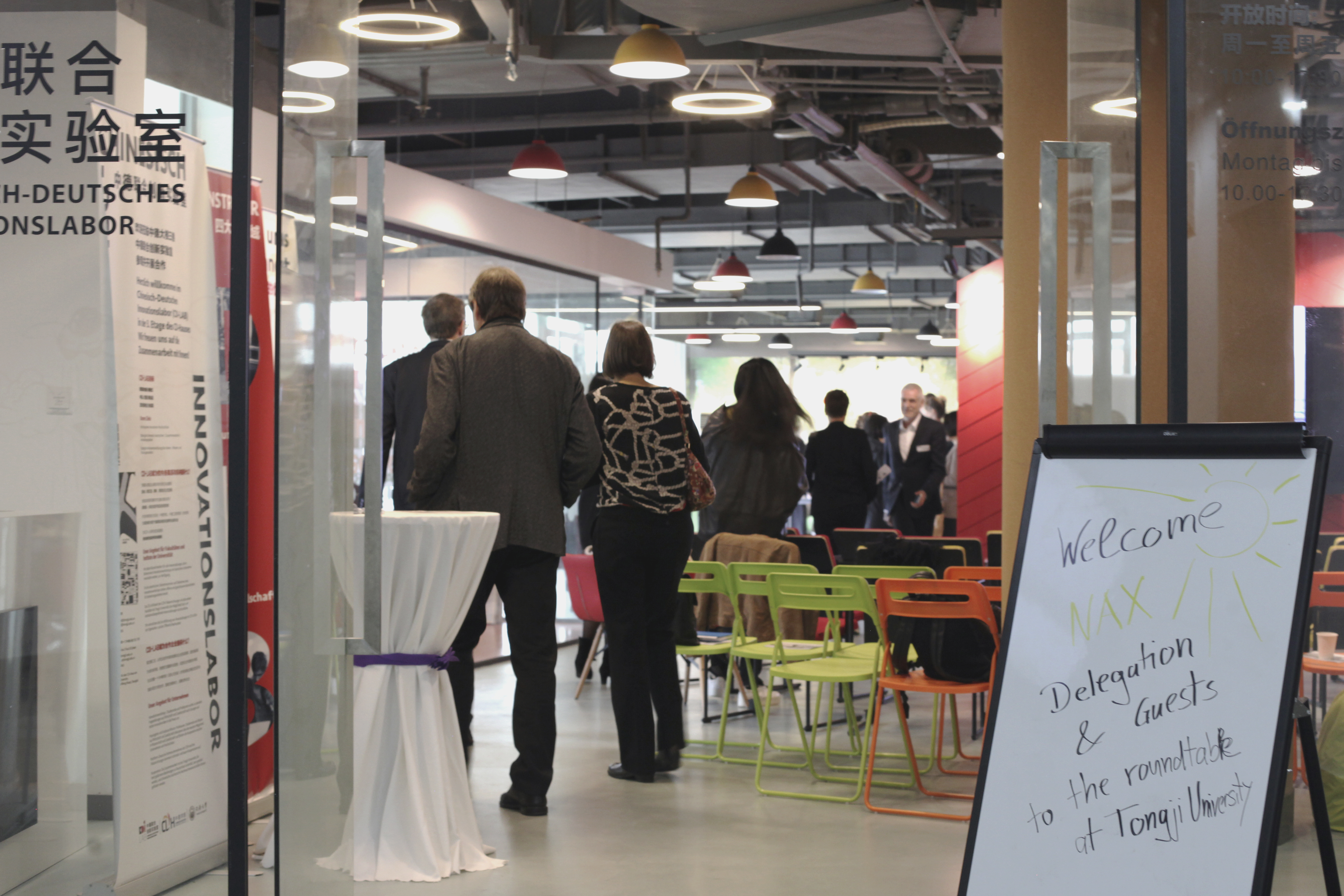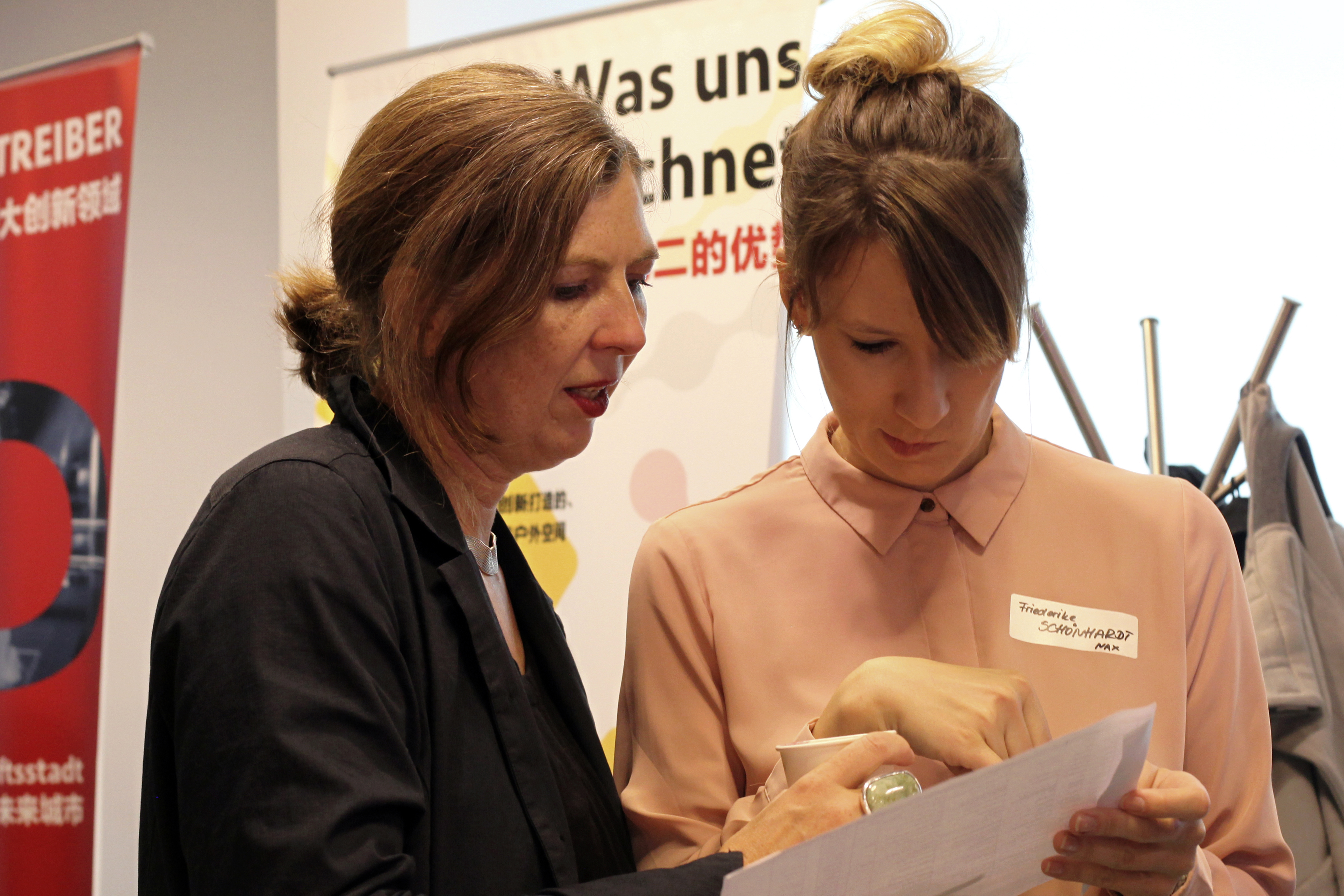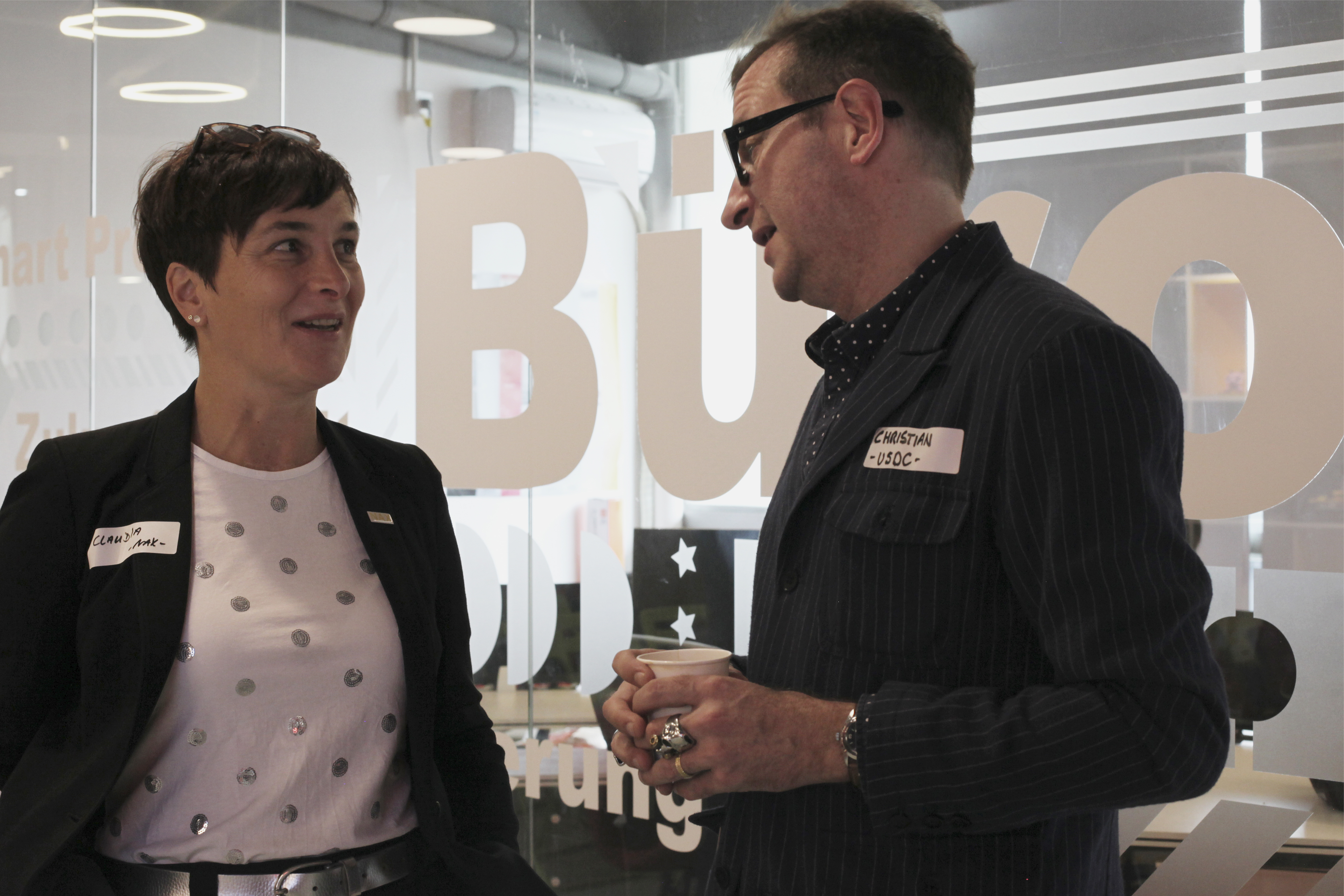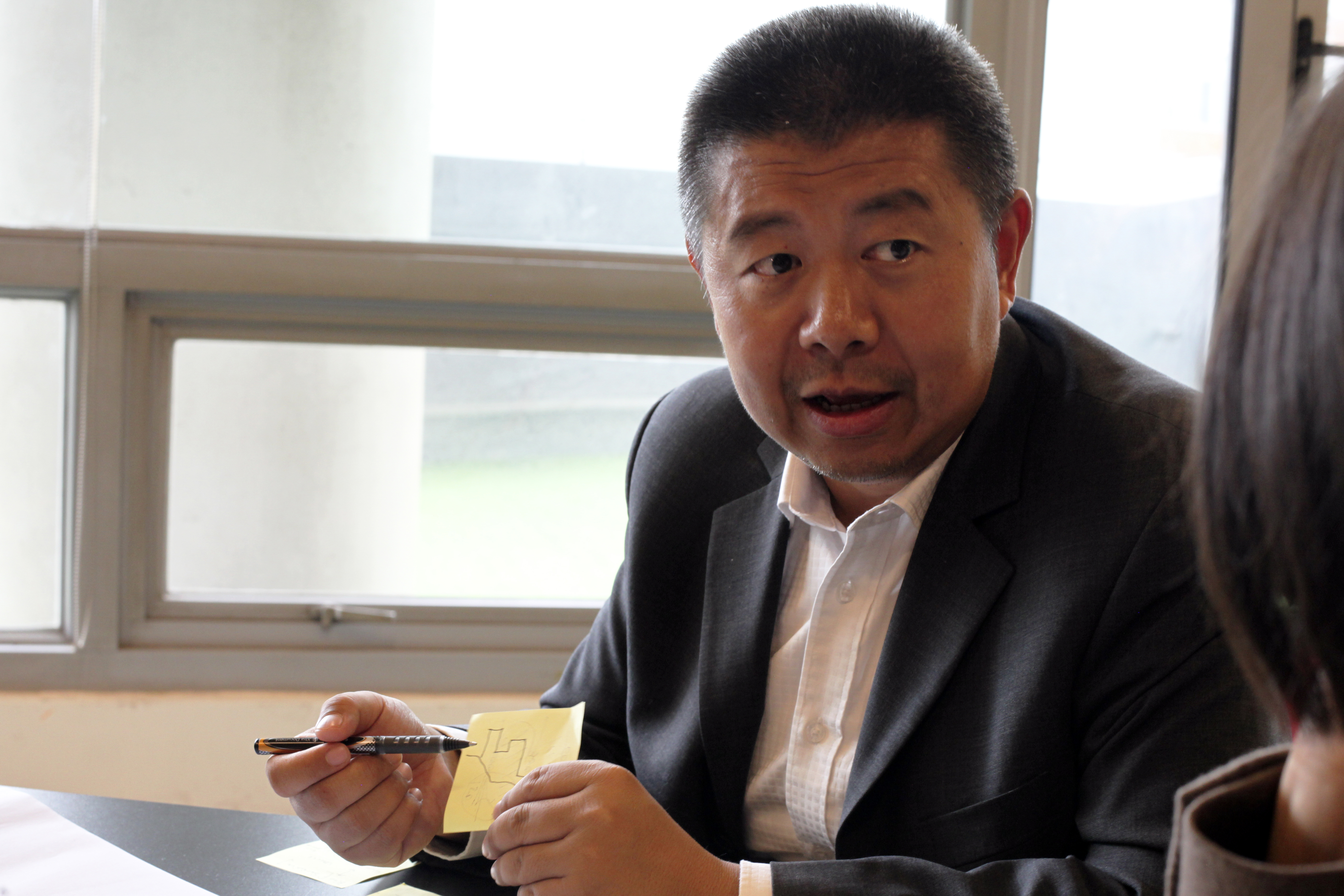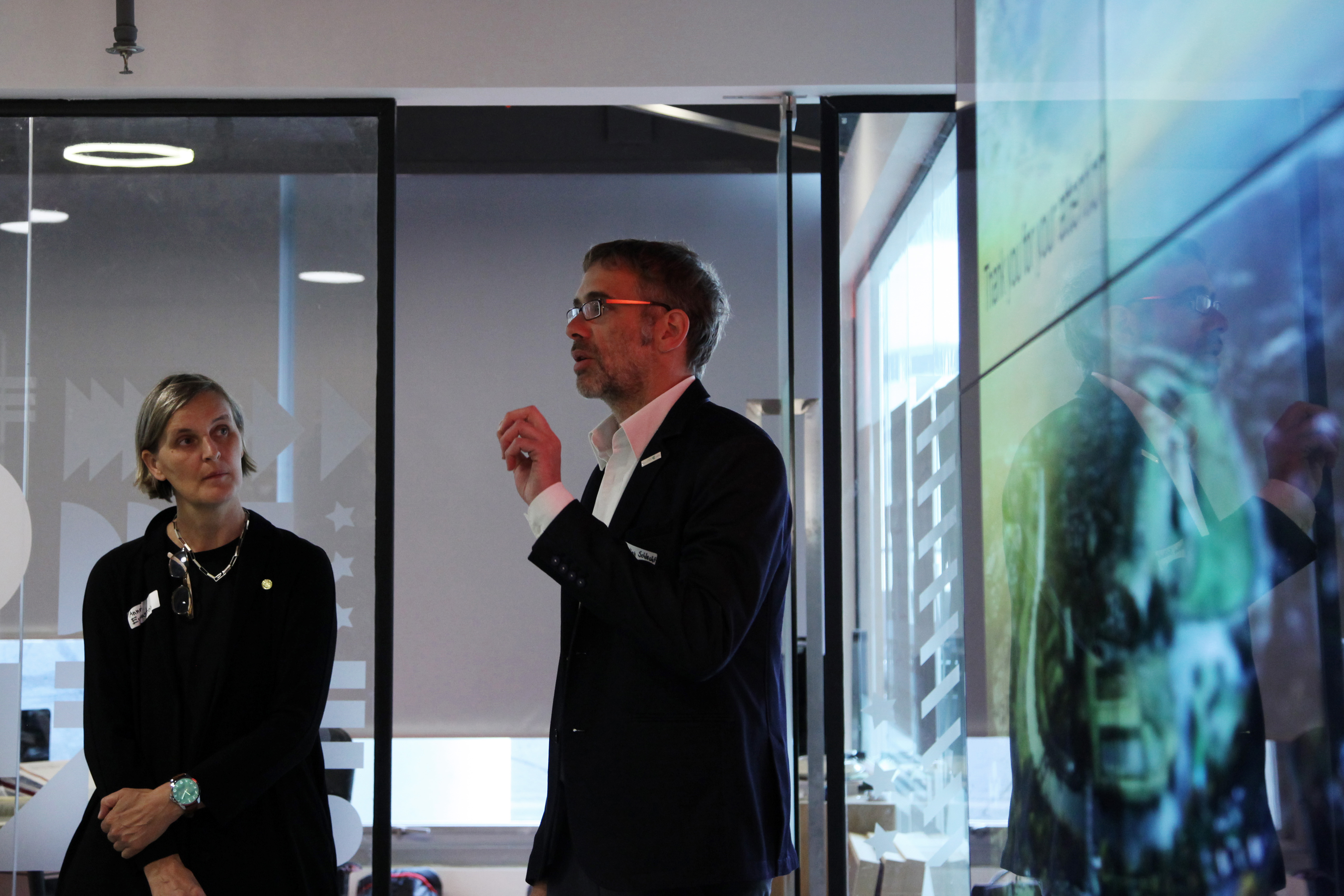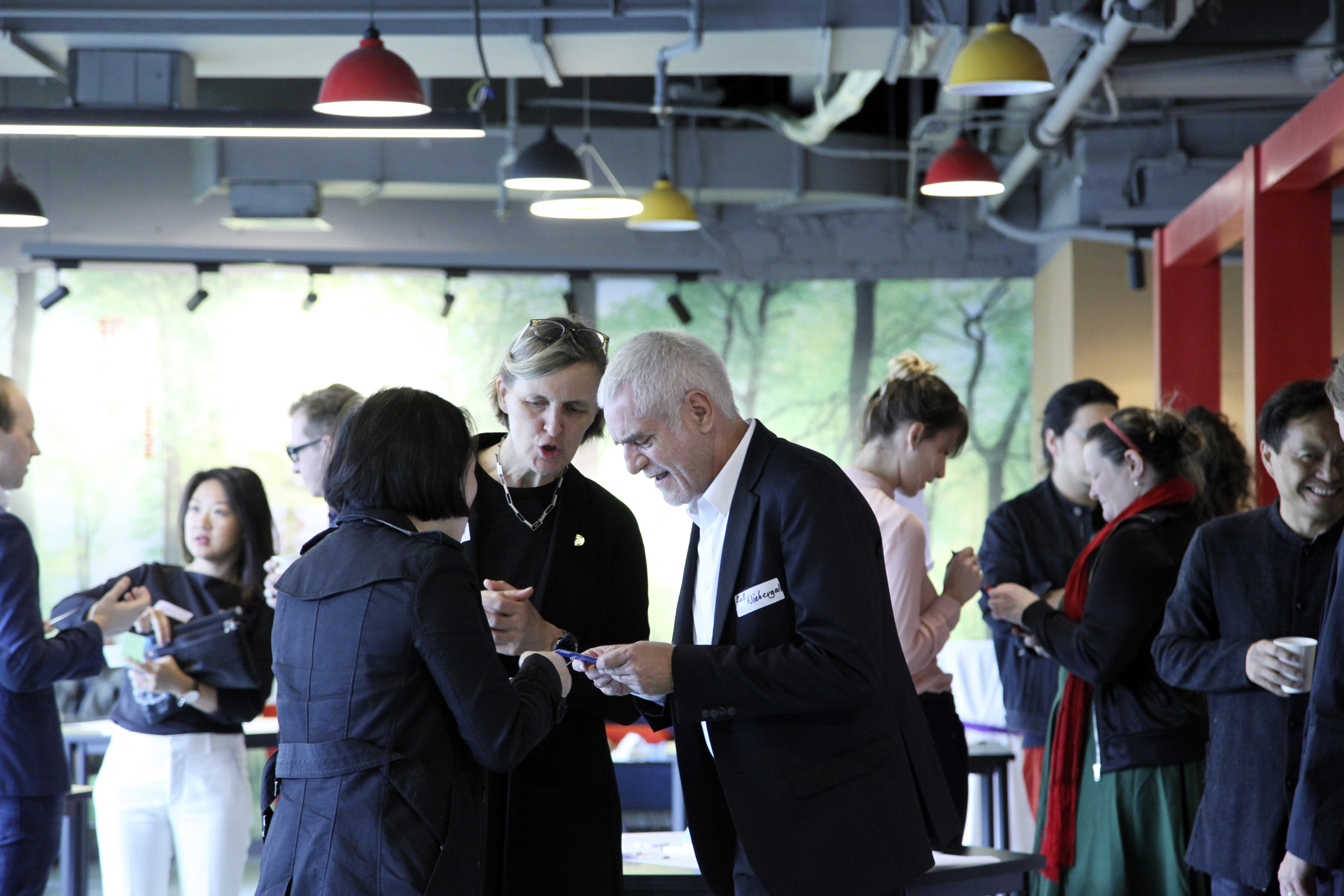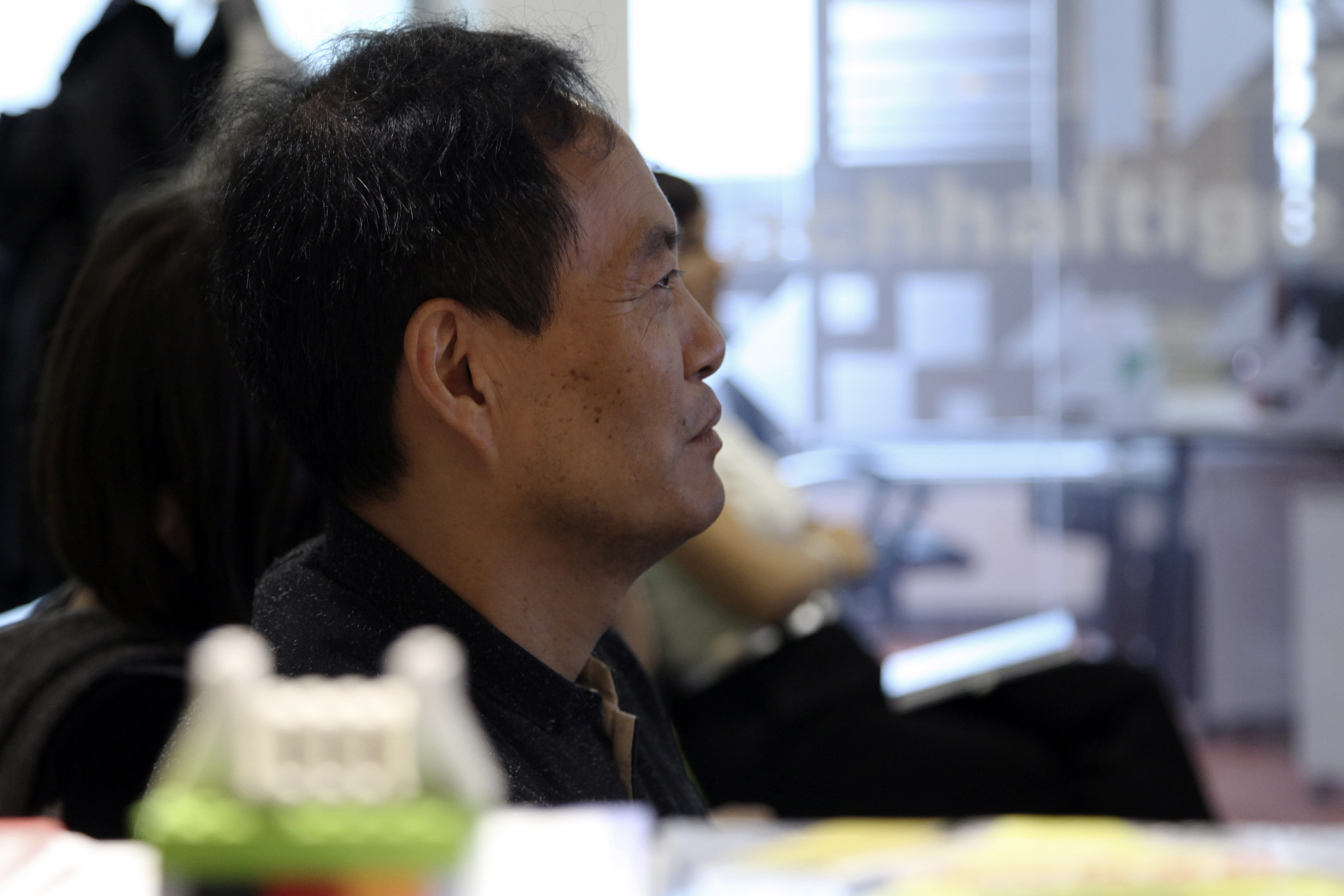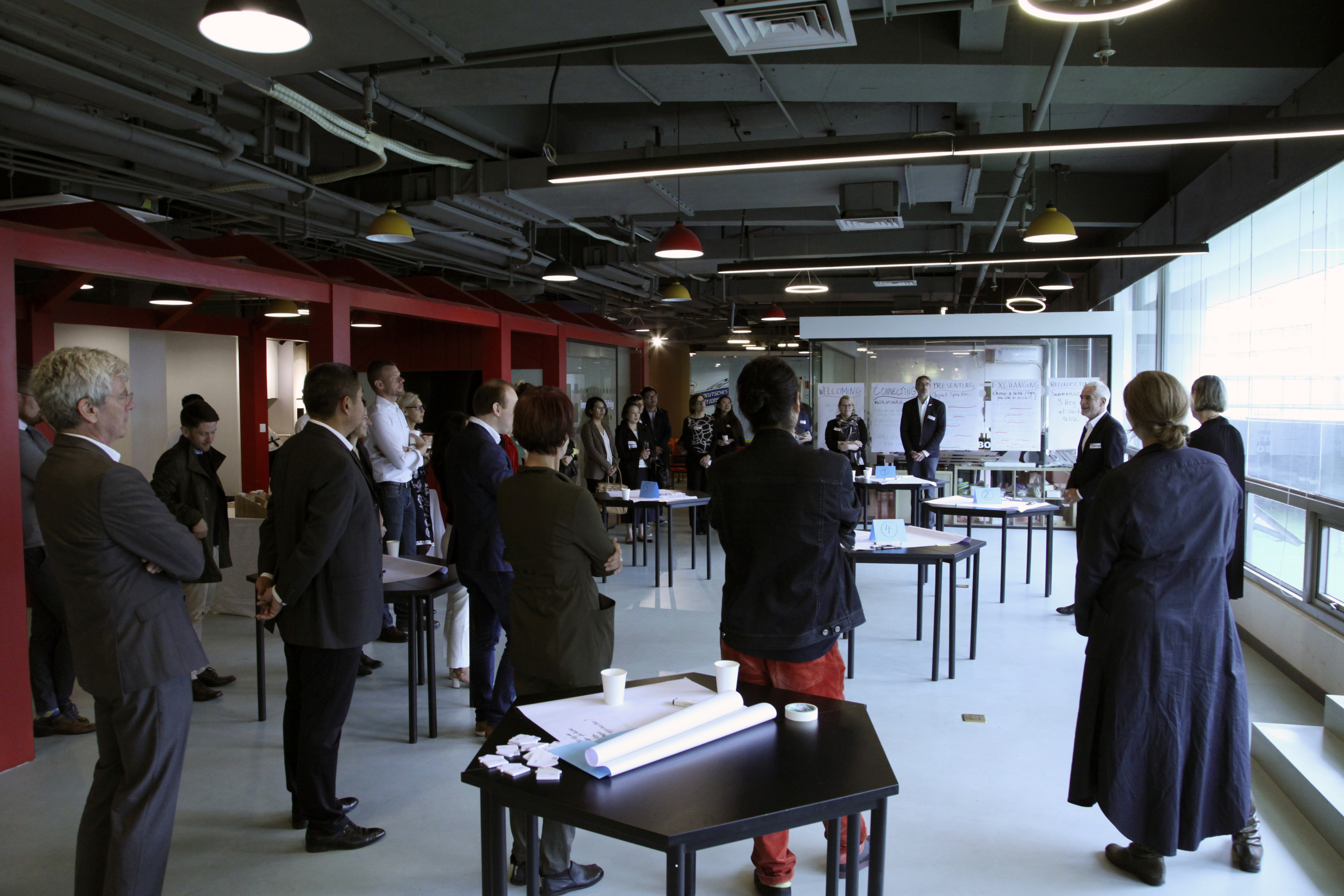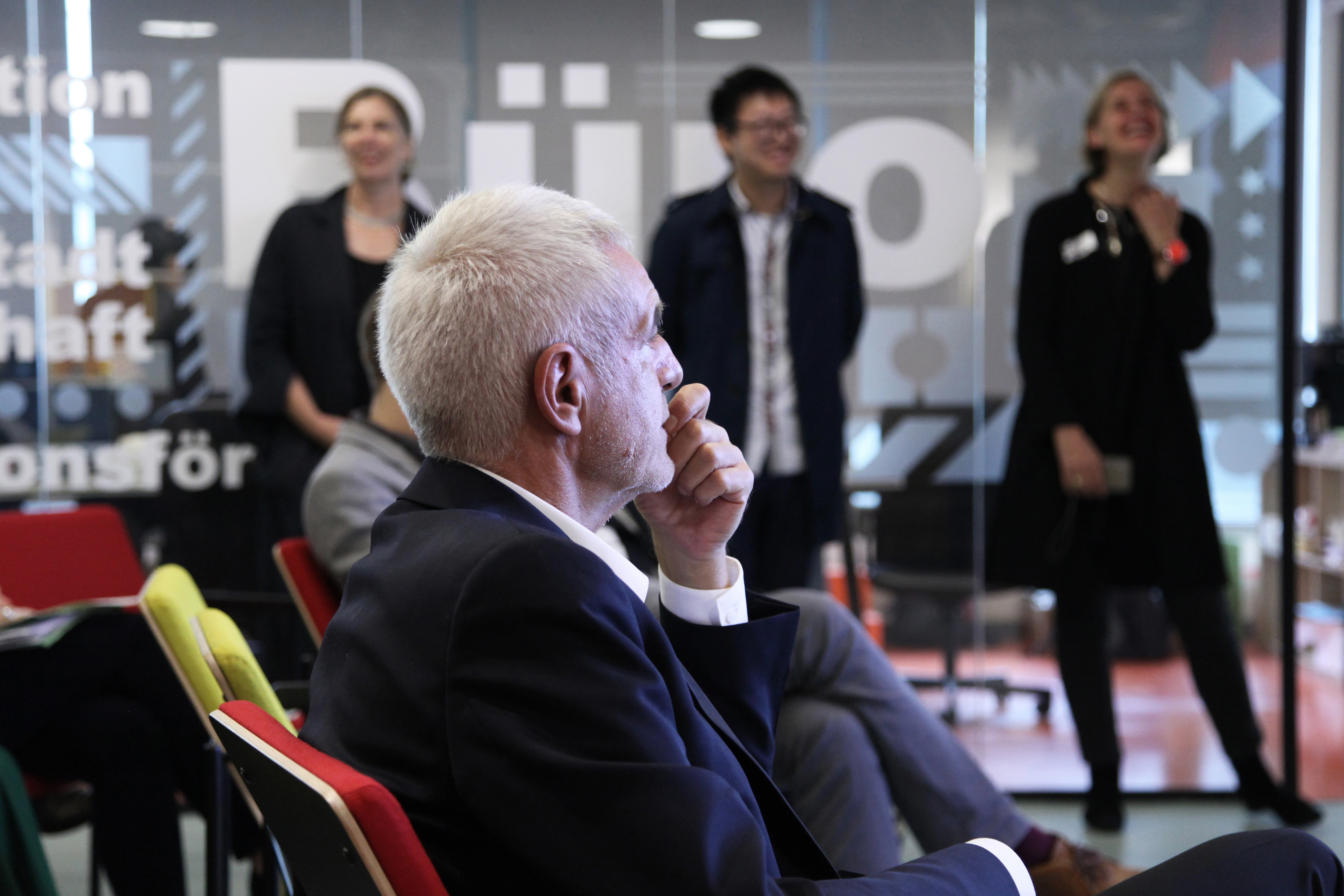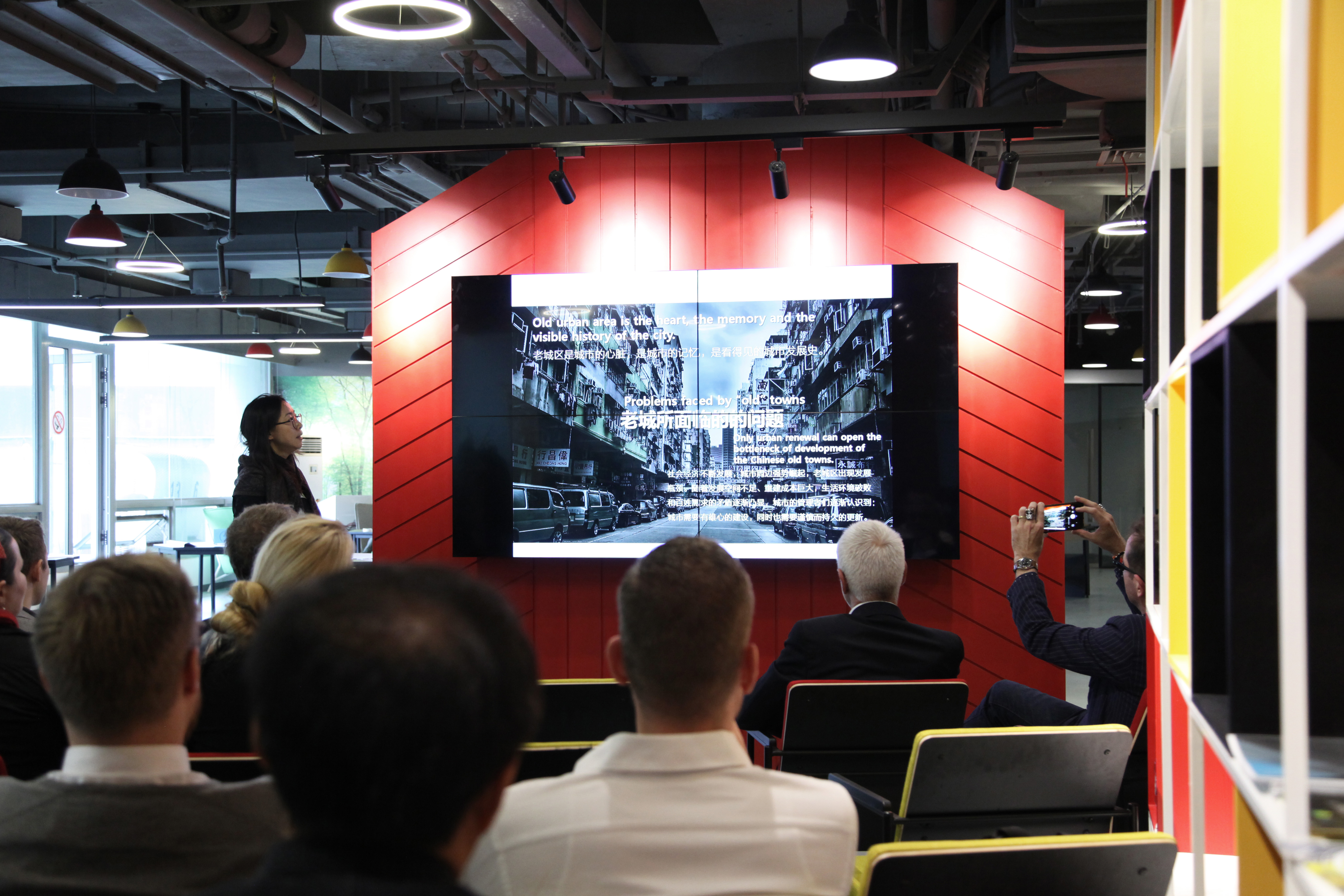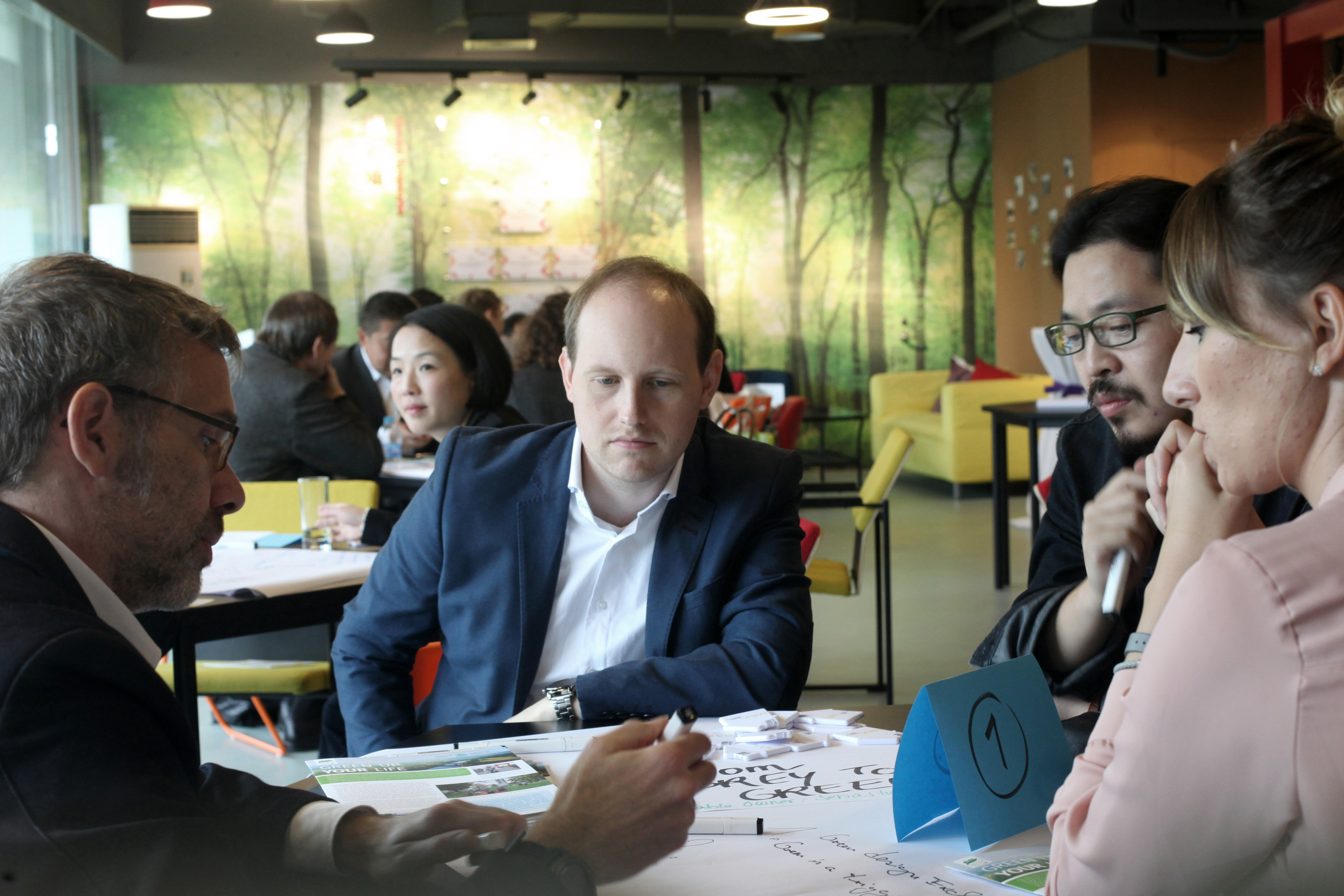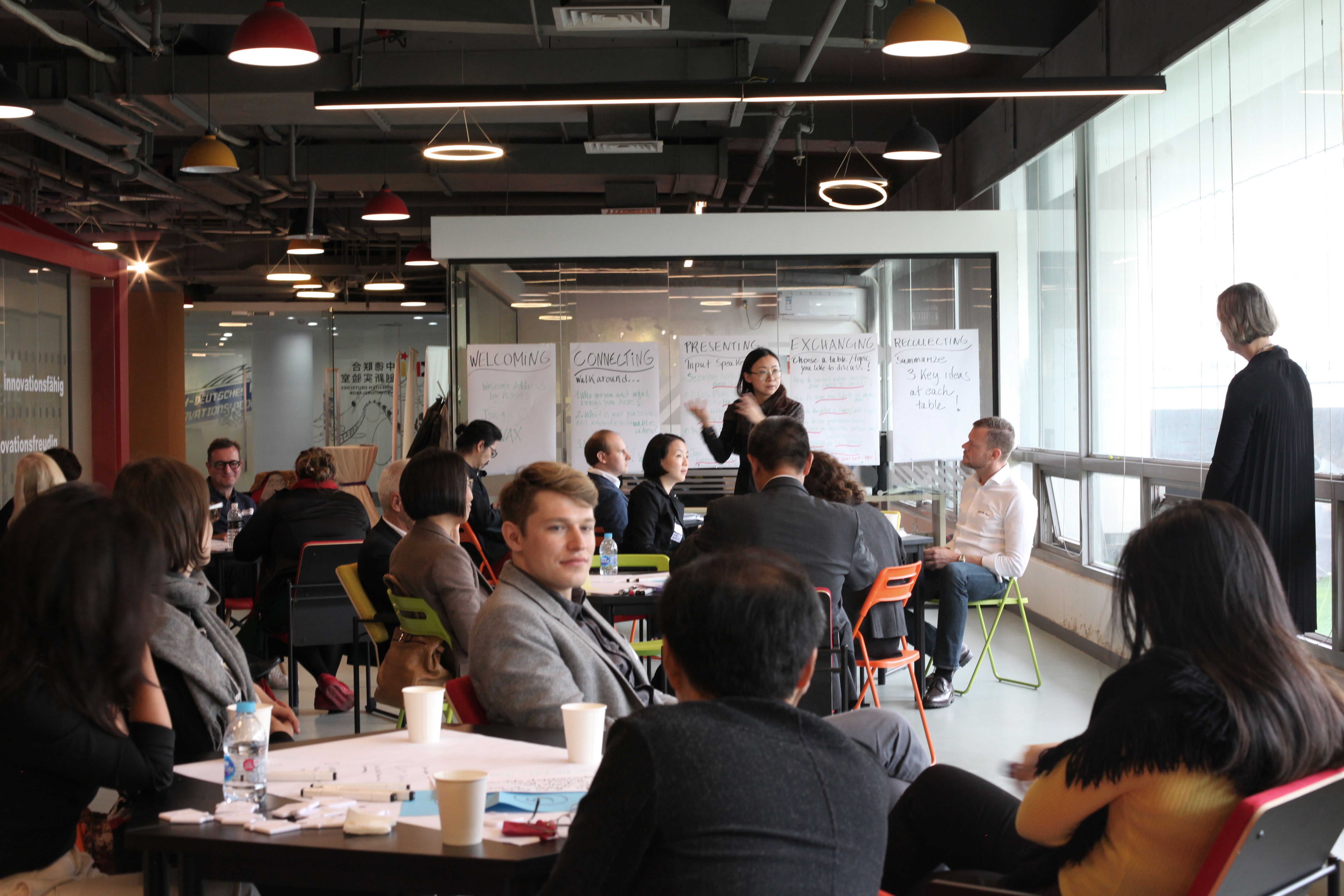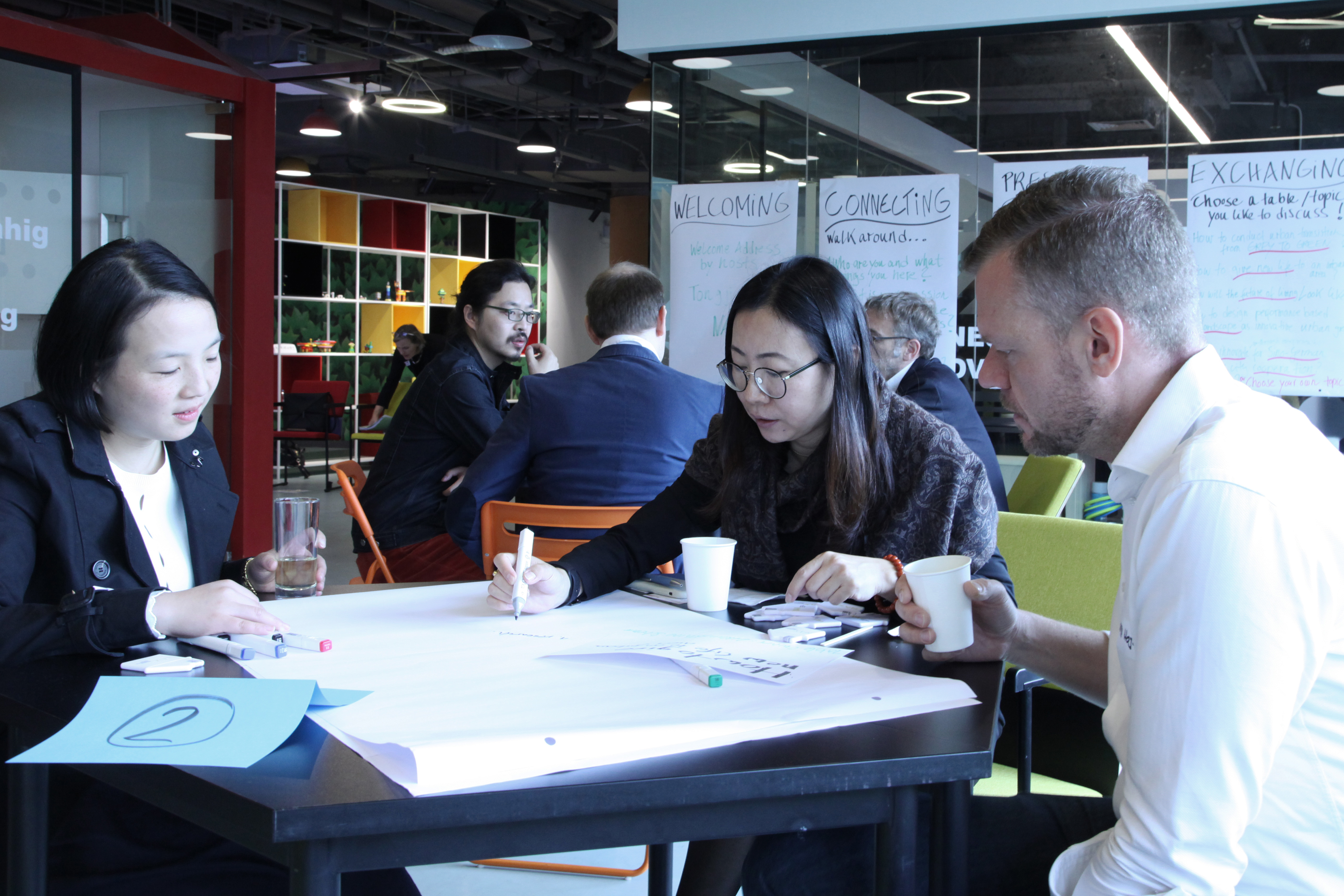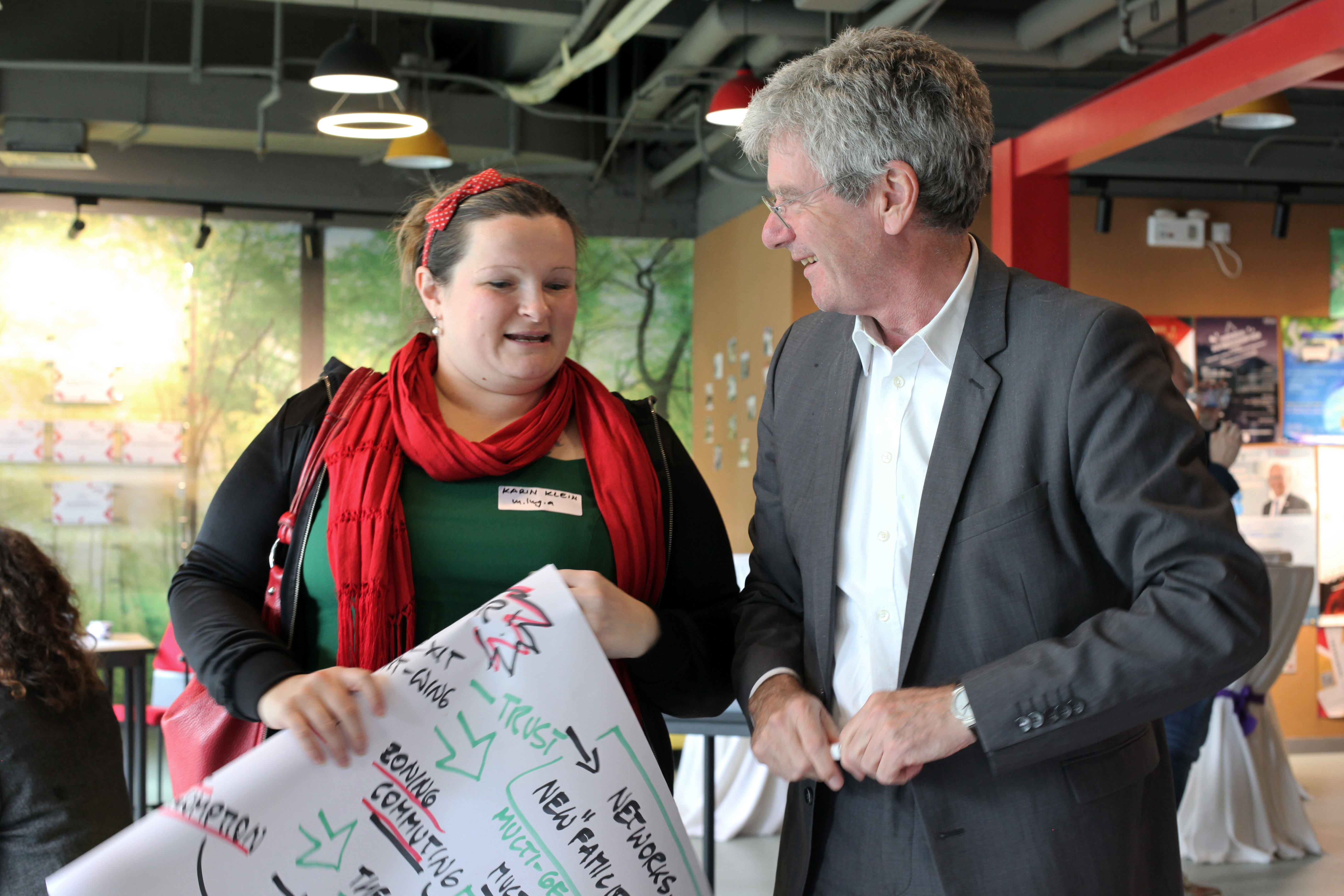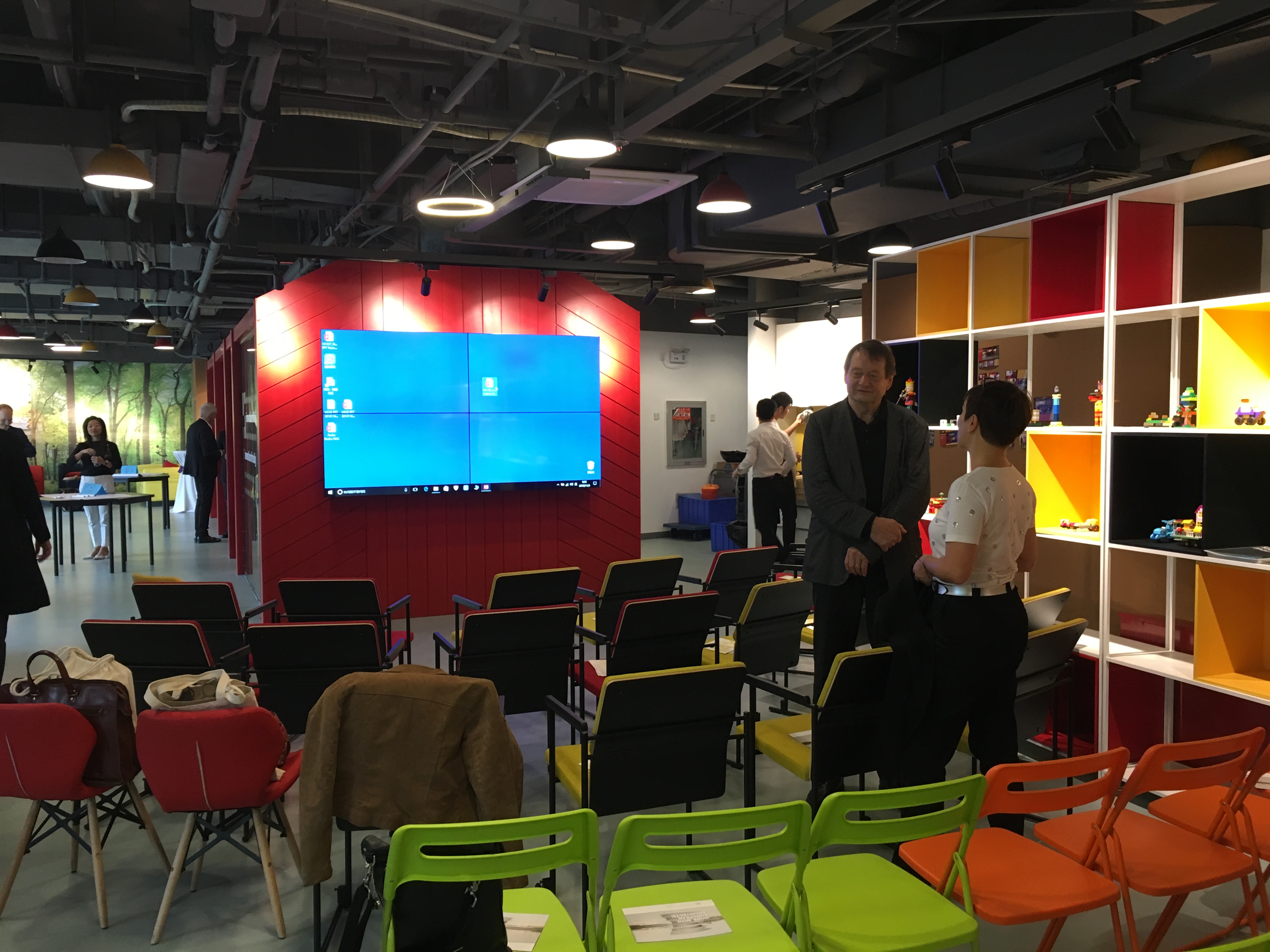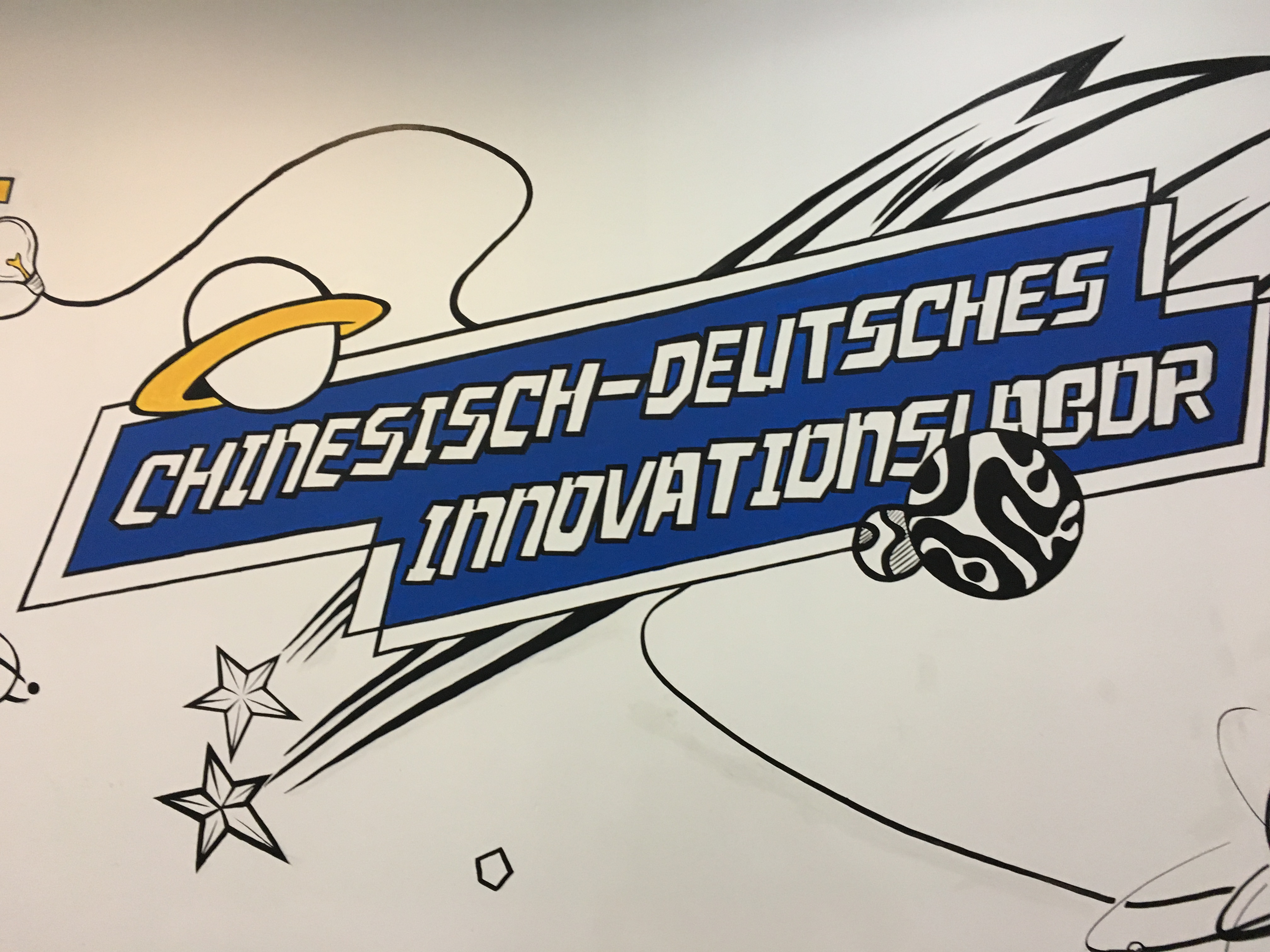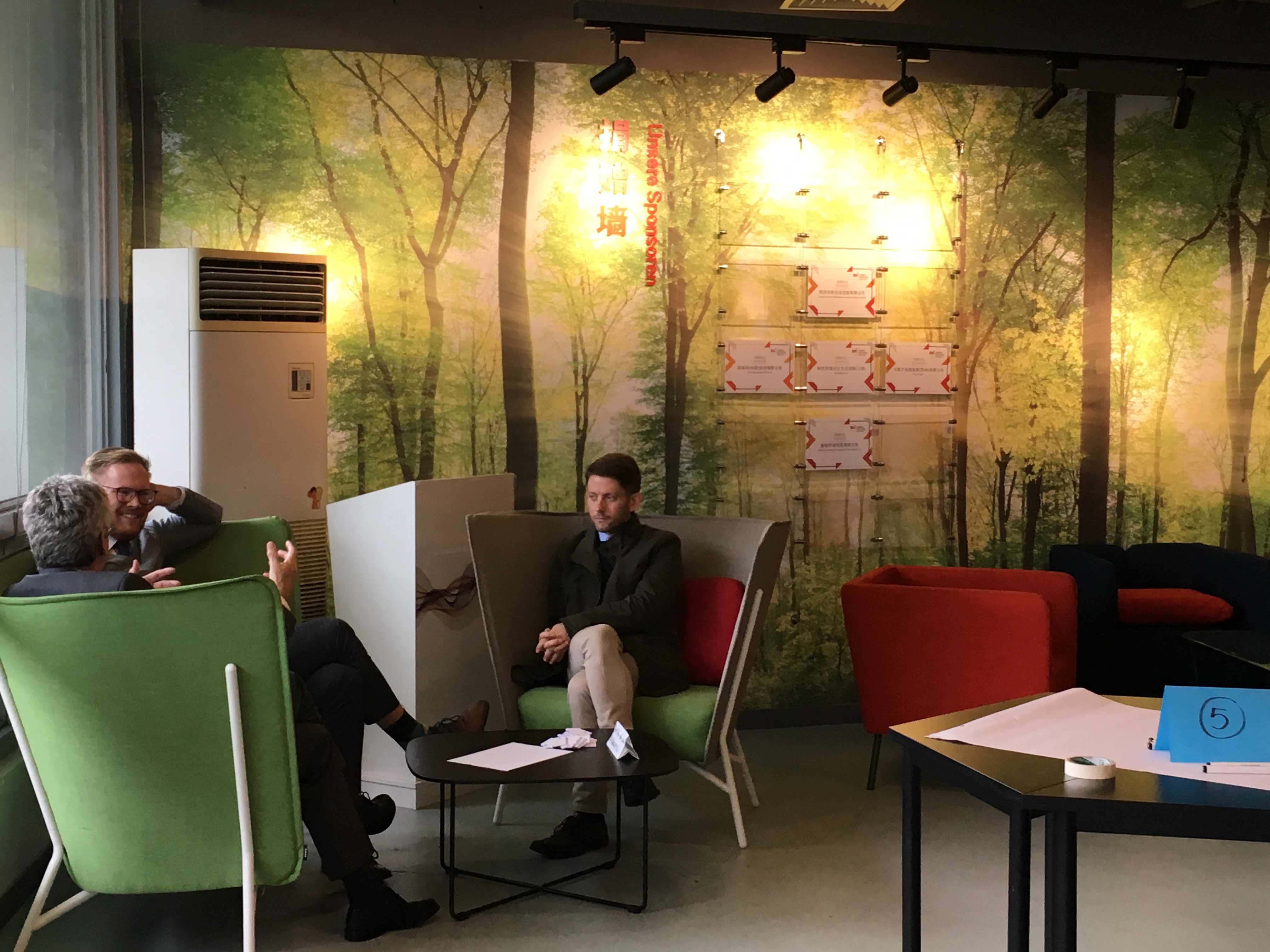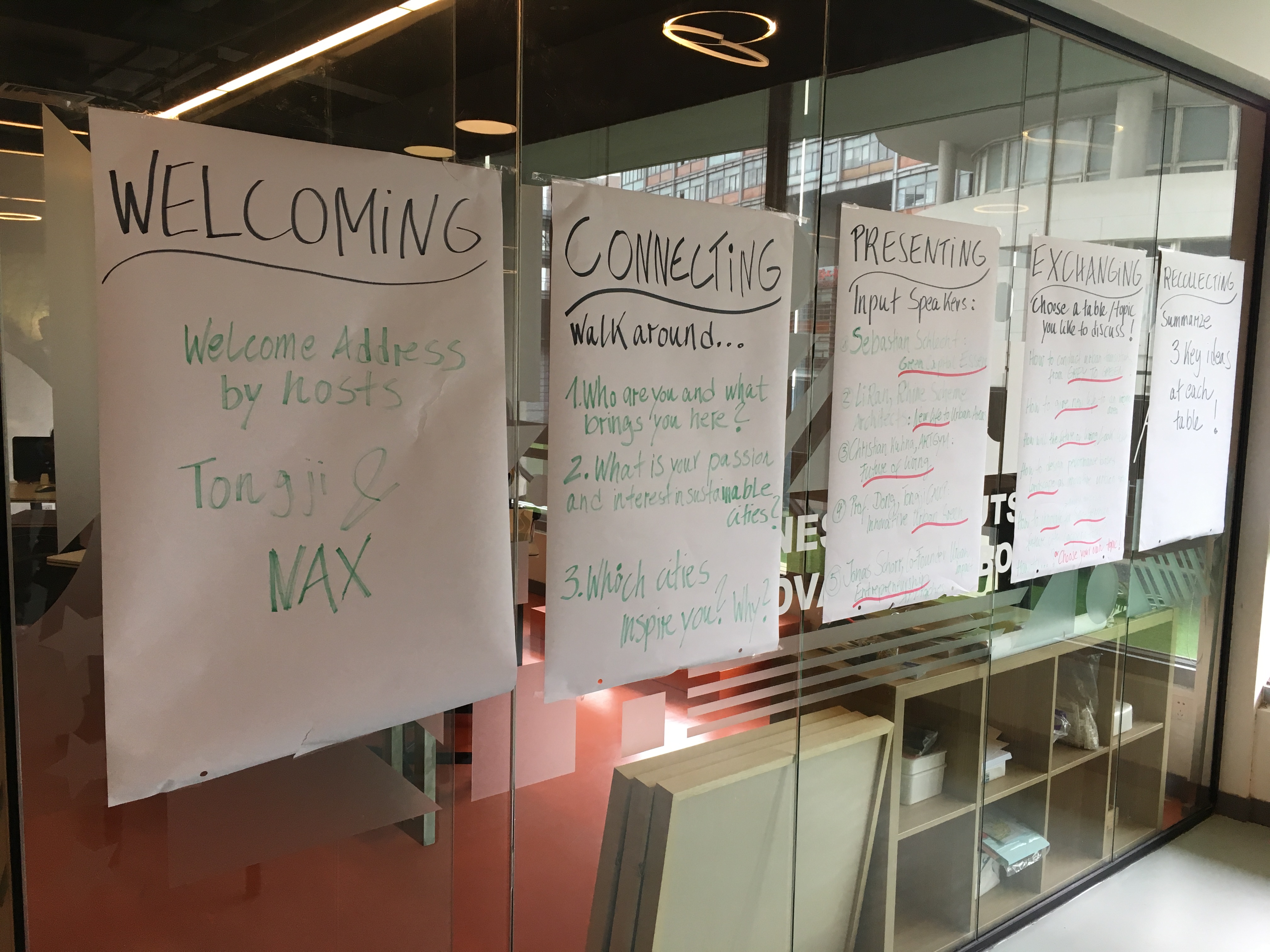The second part of the trip took the participants of the NAXNAX Netzwerk Architekturexport delegation to Shanghai to Tongji University.
Here, the Network for Architecture Exchange NAX, in collaboration with the CAUP (College of Architecture and Urban Planning at Tongji University), invited architects, planners and other experts to a roundtable on “Sustainable Urban Renewal ‘From Macro to Micro’”.

Round about 30 participants accepted the invitation to the Chinese-German Innovation Lab and discussed five different issues on the topic through short presentations and also actively at various roundtables.
Sebastian Schlecht (Project Manager “Green Capital of Europe – Essen 2017” and Citymaker started off the morning with his talk “from grey to green“, in which he reported on the structural change of the city of Essen from a coal and steel city into one of the greenest cities in the Ruhr Metropolitan Region. In 2017, Essen was awarded the title of “Green Capital of Europe”. He introduced solution approaches, such as for example the renaturation and reconstruction of the Emser path (river course).

Round Table “Urban Regeneration” Tongji University: LI Ran from NAX-Member RhineschemeNAX, Fotografin: LI Xin
LI Ran from NAX-Member RhineScheme devoted herself in her talk to the question on how to bring urban areas to new life. On the basis of several examples, like, among other things, the new cultural centre of the Litang Area in Tianjin, she described approaches to solutions and urban planning approaches.
In Litang, the urban planning goal was to create a cultural district of international standing, integrate existing museums and theaters, and incorporate a range of new cultural and public facilities that would positively change the city’s urbanity.

Round Table “Urban Regeneration” Tongji UniversityNAX
The important question “What does the future of living look like and what does that mean for society?” was asked by Christian Kuhna from Urban Society Design Consultancy. How can one handle problems and challenges of modern society, such as stress, loneliness and separation from the family?
He presented a possible solution approach, which aims to create more spaces for functioning communities, to involve older people and to develop a form of living that is close to a “human-centered” society. The result is a multi-generational form of living in which families, the elderly and young workers live under one roof and share a common everyday life. A pilot project in Shanghai, which is to implement his ideas and notions, is already on the way.
Professor DONG Nannan of the College of Architecture and Urban Planning (CAUP) at Tongji University, in his talk, presented the various possibilities of “urban green” and devoted himself to the question of how to design urban spaces innovatively and productively at the same time and / or how to plant on buildings. With the help of several examples, among other things, the planted-on roof of a university, a shopping centre and a historical building, he described impressively how extensively and multi-layered vertical planting can succeed.

Round Table “Urban Regeneration” Tongji UniversityNAX, Fotografin: LI Xin
At four tables, the questions from the lectures were then discussed and elaborated on again in small teams. Above all, the opportunity to look at the different perspectives of “green design in a big way” and to have a look at the “big picture” was welcomed at table 1 (“from grey to green”).
At table 2 (“How can urban areas be revived?“), the multi-layered aspects to upgrade a city or a district were discussed. Beside the benefit of creating an urban environment upgraded with a lot of greenery and nature, social structure plays a very big role for the value of a neighbourhood. In a society in which mistrust rather than trust prevails, and which develops as fast as Chinese society does, future coexistence will also change.
In which form this can happen was discussed at the 3rd table. Above all, building trust, sharing personal things and experiences, and connecting with neighbours and the city would enhance the quality of life and build (re) build trust. New forms of living, such as the multigenerational house presented in the lecture, could be a first approach here.
At the 4th table (“How can urban spaces be created innovatively and at the same time productively or buildings be planted on?”), the participants discussed the benefits and advantages which an urban and green town can bring to its inhabitants. Beside the purely pragmatic benefit of food production – by planting roofs with fruit and vegetables – the social and innovative value of such planting projects was also discussed.
Conclusion
China learns from German and Germany from Chinese expert knowledge in the field of sustainable urban renewal
The Round Table at Tongji University – through its multilayered and committed contributions – demonstrated both the German and the Chinese expert knowledge in the field of sustainable and careful urban renewal. Particularly in the areas of vertical town planting and future residential forms, China could assume a pioneering role. German architects and planners, on the other hand, have a great deal of experience in the transformation of grey urban areas, e.g. from former industrial zones into green urban living spaces.
The detailed exchange between science / research and architects, planners, sociologists, consultants and citymakers as well as the mutually fertilising expert knowledge demonstrated in the talks made the Round Table a success. In the concluding networking, German and Chinese participants continued to exchange their content information and underlined the great need for exchange of experience as well as the desire for real cooperation opportunities on both sides. NAX will stay in dialogue with its partner here in order to work on further joint projects together with the AUP (College of Architecture and Urban Planning at Tongji University).
A subsequent guided tour by Prof. DONG Nannan through the CAUP (College of Architecture and Urban Planning at Tongji University) and an architectural tour across the famous Bund in Shanghai rounded off the day.

